This mausoleum was built by the king Theodoric (Teodorico in Italian) during the middle 6th century. This building is noteworthy for several reasons. It was the first building we visited in Ravenna. It had the loudest echo. All of the rock used in the construction is from across the Adriatic. The vaulted ceiling is made from one solid piece of stone 3 feet thick and 100 feet (33 meters, in fact) in diameter.
It was intended to be a tomb and is now largely empty. Some of the sculptural details, though, are still there and interesting.
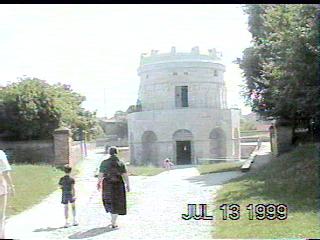 |
|
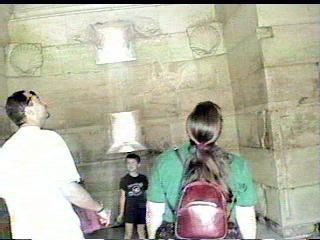 |
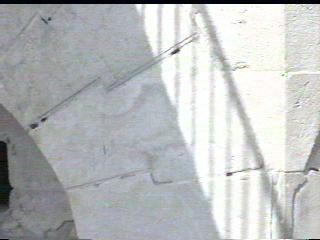 |
Galla Placidia lived in the early 5th century and played a central role in the history of Ravenna. Her uncle was the Emperor of the Eastern Roman Empire while her son was the Emperor of the Western Roman Empire. For 25 years, Galla Placidia provided protection and peace to Ravenna.
This monument to Galla and dedicated to Saint Lawrence was built between 425 and 430, with a few modifications over the ages. Although the outside is rather plain and simple, as are most of the churches of Ravenna, the interior is breath-taking.
The mosaics are deep in color and in detail. The ceiling shown below has a cross pointing East and watched by the golden symbols of the four Evangelists: the lion of St. Mark, the ox of St. Luke, the eagle of St. John, and the man of St. Matthew. Apparently in early Christian symbology, these images represented the focus each writer took in their gospels.
The interior of the building was rather dark since clear window glass was not used. Instead, rock (it looks like agate to me) has been cut so thinly that it is now transparent and is used as a window.
In addition to the religious symbolism, the mosaics are arranged in a geometric pattern reminiscient of a Flischer drawing. Again, this is of interest since this science of perspective was not developed until the 16th and 17th centuries, but here is a first attempt at 3D effects from 1100 years earlier.
 |
|
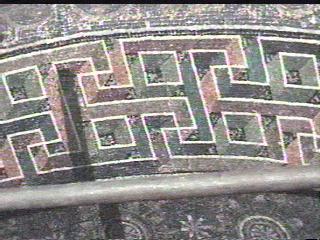 |
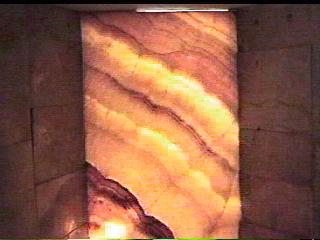 |
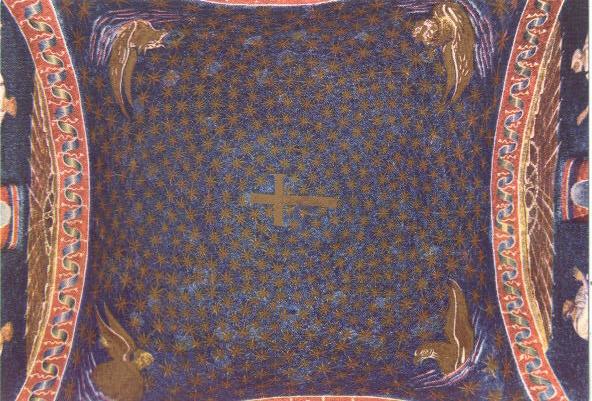 |
|
Dante lived in the 14th century and is credited with creating, through his writings, the modern Italian language. He died in 1321 and was placed in a sarcophogas near the present masoleum. It was not until 1780 that the present building was built. To this day, it remains an important place for pilgrims and students of the Italian language.
 |
|
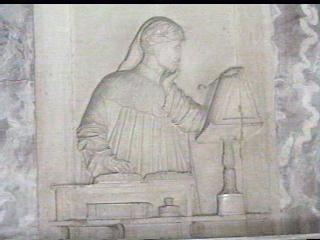 |
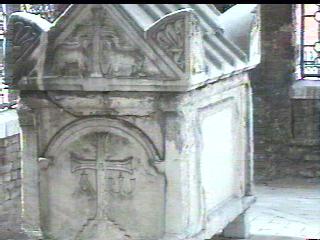 |
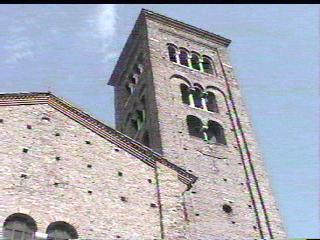 |
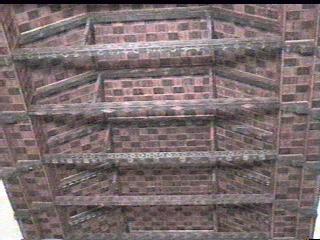 |
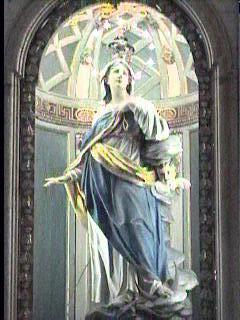 |
 |
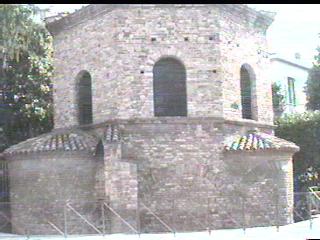 |
 |